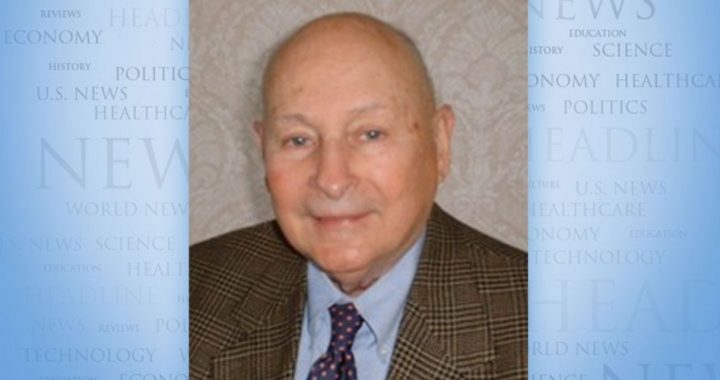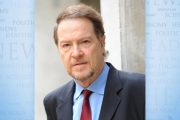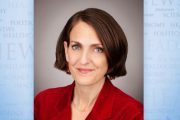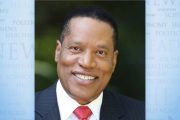
One of the reasons why we know so much about Humanistic Psychology today is because of the defection of one of its major practitioners, Dr. William Coulson, a former colleague of Carl Rogers and Abraham Maslow. He testified how fraudulent the Encounter Movement was as science and how destructive it was in practice.
The encounter idea was first developed at the National Training Laboratory (NTL) at Bethel, Maine, sponsored by the National Education Association. It was founded in 1948 by Kurt Lewin, a German social psychologist who invented “sensitivity training” and “group dynamics,” or the psychology of the collective. Lewin’s work was very much in harmony with John Dewey’s collectivist educational philosophy.
Lewin’s work in Germany in the 1920s was also in harmony with the experiments taking place in Pavlov’s laboratory in Moscow on techniques of artificially creating behavioral disorganization. All of this was well expounded in a book written by one of Pavlov’s colleagues, Alexander Luria, The Nature of Human Conflicts, Researches in Disorganization and Control of Human Behavior, published in 1932. It had been translated from Russian by W. Horsley Gantt, an American psychologist who had spent the years 1922 to 1929 working in Pavlov’s laboratories in the Soviet Union. In his preface to the book, Luria wrote:
The researches described here are the results of the experimental psychological investigations at the State Institute of Experimental Psychology, Moscow, during the period 1923-1930. The chief problems of the author were an objective and materialistic description of the mechanisms lying at the basis of the disorganization of human behavior and an experimental approach to the laws of its regulation…. To accomplish this it was necessary to create artificially affects and models of experimental neuroses which made possible an analysis of the laws lying at the basis of the disintegration of behavior.
In describing the results of the experiments, Luria wrote: “Pavlov obtained very definite affective ‘breaks,’ an acute disorganization of behavior, each time that the conditioned reflexes collided, when the animal was unable to react to two mutually exclusive tendencies, or was incapable of adequately responding to any imperative problem.”
Both dyslexia and attention deficit disorder can be artificially created by the methods used in Pavlov’s laboratory to create behavior neuroses in animals. Luria writes further:
K. Lewin, in our opinion, has been one of the most prominent psychologists to elucidate this question of the artificial production of affect and of experimental disorganization of behavior. The method of his procedure — the introduction of an emotional setting into the experience of a human, the interest of the subject in the experiment — helped him to obtain an artificial disruption of the affect of considerable strength…. Here the fundamental conception of Lewin is very close to ours.
Lewin died in 1947 shortly after establishing the National Training Laboratory at Bethel, Maine. Sensitivity training was considered his most original achievement. Carl Rogers considered sensitivity training to be “perhaps the most significant social invention of this century.”
Indeed, Rogers was the man most responsible for linking the encounter movement to humanistic psychology. He was the founder of nondirective psychological counseling, in which the therapist or teacher is merely a facilitator who helps the client or pupil get in touch with his own feelings so that he can direct his own decision-making in accordance with his own values. In teaching, this encourages moral subjectivism and pupil rejection of all outside authority.
Rogers became the guru of the encounter movement because of his extensive experimentation with the technique at the Western Behavioral Sciences Institute (WBSI) at La Jolla, California. In a talk to a large audience of educators on the subject of educational charge in 1968, Rogers explained very clearly what the encounter group was all about:
One of the most effective means yet discovered for facilitating constructive learning, and growth, and change in individuals and in the organization they represent is the intensive group experience. It goes by many names: encounter group, T-group, sensitivity training. There are a number of labels, but as far as I can see they all represent somewhat the same effort, and I think that all of those efforts have an underlying theme and quality of experience.
The intensive group or encounter group usually consists of 10 to 15 persons and a facilitator or leader. Personally, I like the term facilitator better because I think he really helps to facilitate the group in its own direction rather than try to lead it in his direction. It’s a relatively unstructured group providing a climate of maximum freedom for personal expression, exploration of feelings and interpersonal communication.
But here is where Dr. William Coulson enters the picture. Born in 1933, Coulson grew up in both California and the Midwest in a strongly Catholic family. In 1955 he got his Bachelor’s degree at Arizona State University. From 1957 to 1964 he pursued graduate work at Loyola University, then at Notre Dame where he got a Master’s in philosophy and finally a Ph.D. He also attended Berkeley where he switched from philosophy to counseling and psychology and earned an Ed.D. In 1963 he became a graduate student of Carl Rogers at the University of Wisconsin. Rogers had studied under John Dewey in the 1920s.
At the end of 1963, Rogers moved to the Western Behavioral Sciences Institute (WBSI) at La Jolla, and Coulson joined him there as an apprentice and research assistant, a working relationship that was to last for the next 15 years. Rogers had taught Coulson how to perform his type of nondirective psychotherapy, and Coulson helped Rogers set up a series of weekend encounter workshops. Word got around about this innovative form of intensive group therapy in which people got in touch with their feelings, lives were changed, and organizations were restructured. They began attracting nuns and priests to the workshops.
In the fall of 1967 Rogers and Coulson began their first large-scale encounter project with a parochial school system in Los Angeles consisting of a college, two high schools, and some 60 elementary schools. The formal name of the system was the California Institute of the Sisters of the Most Holy and Immaculate Heart of the Blessed Virgin Mary. Informally they were the “Immaculate Hearts.”
Coulson writes: “They had a progressive reputation, and it was their progressiveness which made them willing to offer their school system as the setting for the first experiment by the newly convened Educational Innovation project staff.”
The results of the experiment were disastrous. As Coulson describes it, “The entire school system began to crumble under the weight of too much feeling expression.” Rasa Gustaitis, a freelance journalist who wrote a book about the encounter movement, reported that Dr. Rogers and his staff “put the administrators, teaching nuns and students through truth labs. The sisters began to speak out long-buried emotions and to allow themselves to experience thoughts long submerged in prayer. Soon they were appearing at labs in civvies and Cardinal McIntyre pronounced he never wanted to see a nun in a miniskirt again. They went back to habits, then returned to civvies. By spring 1968, the transformation was in full swing.”
Coulson writes: “Today there is no more Immaculate Heart religious order, just as there is no more Immaculate Heart College. The nuns had become ‘continually aware of their feelings,’ eager to express them and eager to hear the feelings of others. The institution didn’t survive.”
It was the tragic results of the Immaculate Heart project that made Coulson realize that there was something terribly wrong with what he and Rogers had been doing. He explained that when you look at the fruits of what they did, they are so uniformly rotten that you have to think that a Satanic spirit had entered the group. If they had been visited by an angel the fruits would have been delicious.
“The fattest case file I have is headed ‘sad cases,’” Coulson told me in an interview in 1990, “and they are all follow ups on people who have been through our encounter groups, and the most recent one, was this little boy in Canton Township, Michigan, who committed suicide at the age of 8. He wasn’t in our encounter groups, of course, and his teacher wasn’t either that I know of. But following the Michigan Model, they showed a film in class within the context of an exploration of feelings including a list of 25 bad feelings that kids are apparently supposed to get in touch with. Having seen this very sad movie in which a handicapped boy tries to kill himself and overempathizing with what he saw, he went home and completed the act.
“In this same semester, a mother complained that her elementary school child was having to write her own obituary. And the mother was terribly alarmed by this in light of the suicide in the neighboring community.”
Death education is part of the Michigan Model, an “affective” curriculum developed by humanist educators. The affective domain is that part of the school curriculum that deals with the children’s values, feelings, self-esteem, and attitudes toward sex, drugs, and death. Its components include values clarification, multiculturalism, globalism, sensitivity training, situational ethics, transcendental meditation, New Age relaxation techniques, Eastern mysticism, group counseling, gender orientation counseling, sex education, drug education, and death education.
Why are so many perfectly normal kids committing suicide? Coulson’s answer: “I think it’s because they have been taught to respect legitimate authority and their parents have taught them that the school possesses legitimate authority. And so the things that they could discount if they heard them in the street, they can’t discount them when they hear them in the classroom.”
Abraham Maslow, Coulson’s mentor, died in 1970, having already realized that the third force had become a destructive force. In his last article, published after his death, he wrote:
I am very disturbed by those who proceed blithely to assume that we already know what we are doing and then simply apply in an unquestioning way the techniques which have been offered as simply experimental techniques, as “trying something out to see what happens.”…
I share with many other scholars and scientists a great uneasiness over some trends (or rather misuses) in Esalen-type education [intensive encounter group experience]. For instance … I see trends toward anti-intellectualism, anti-science, anti-rationality, anti-discipline, anti-hard work, etc. I worry when competence and training are by some considered to be irrelevant or unnecessary. I worry when I see impulsivity confused with spontaneity….
My impression had been growing through the last four or five years of teaching that I was being used not so much as a teacher but as an object upon which some authority-rebellious students sharpened their teeth and claws, as the bear uses a scratching tree.
In the end, Maslow was honest enough to admit that his theory of self-actualization had simply become a tool for rebellious students to act out their own version of destructive self-actualization. What does it all amount to? Another utopian dream down the drain!



